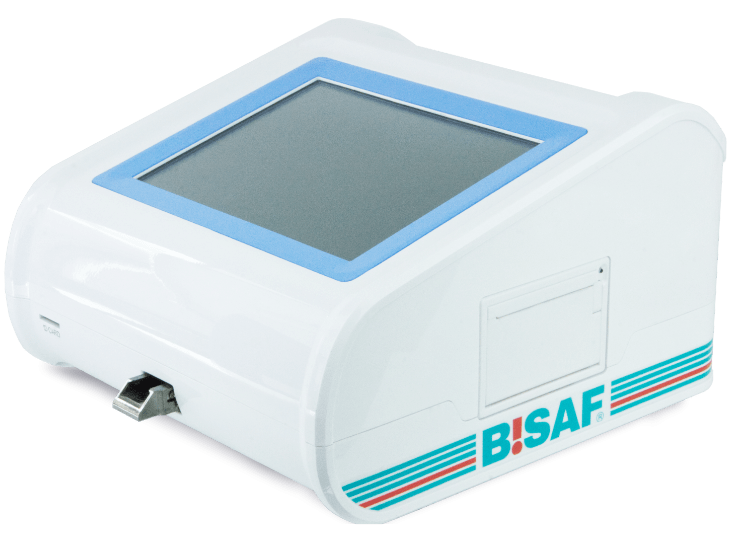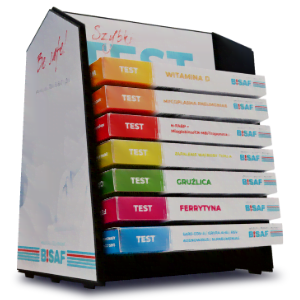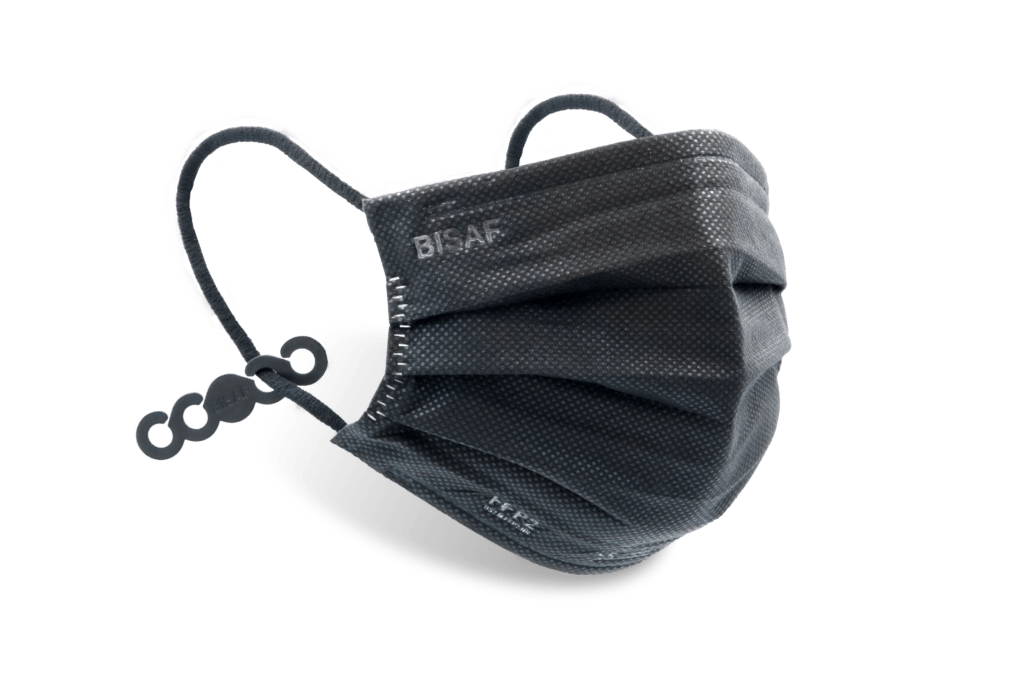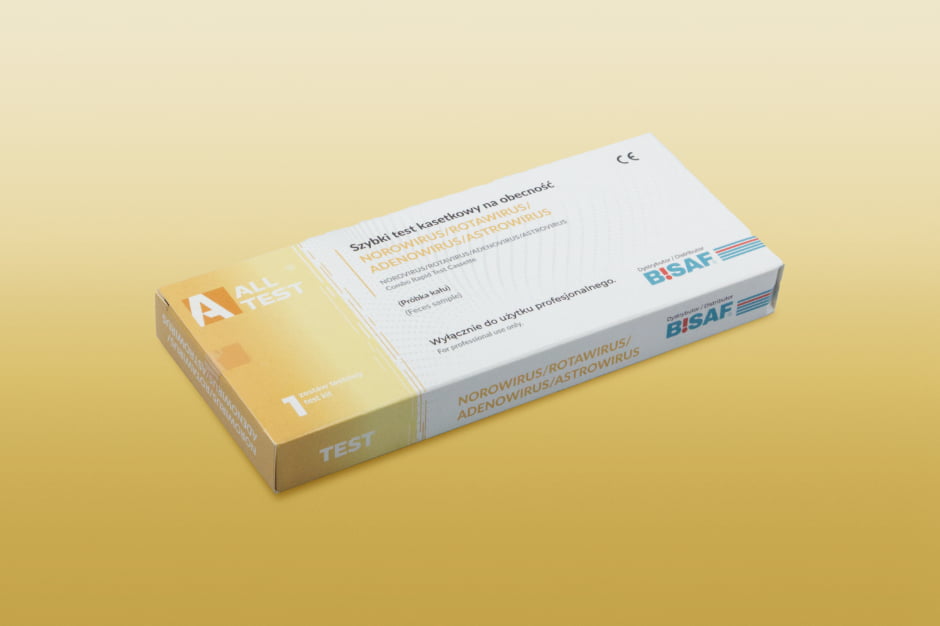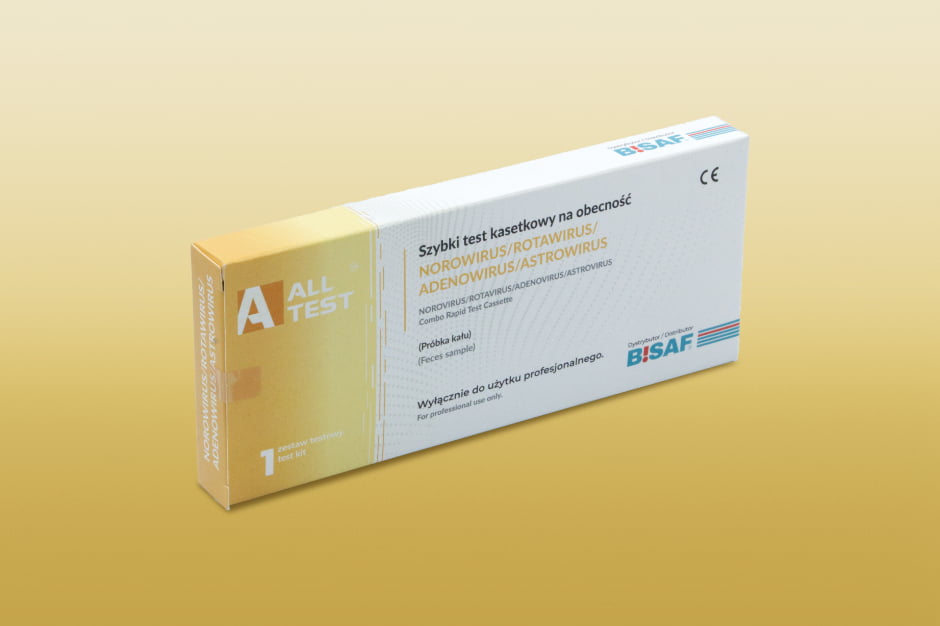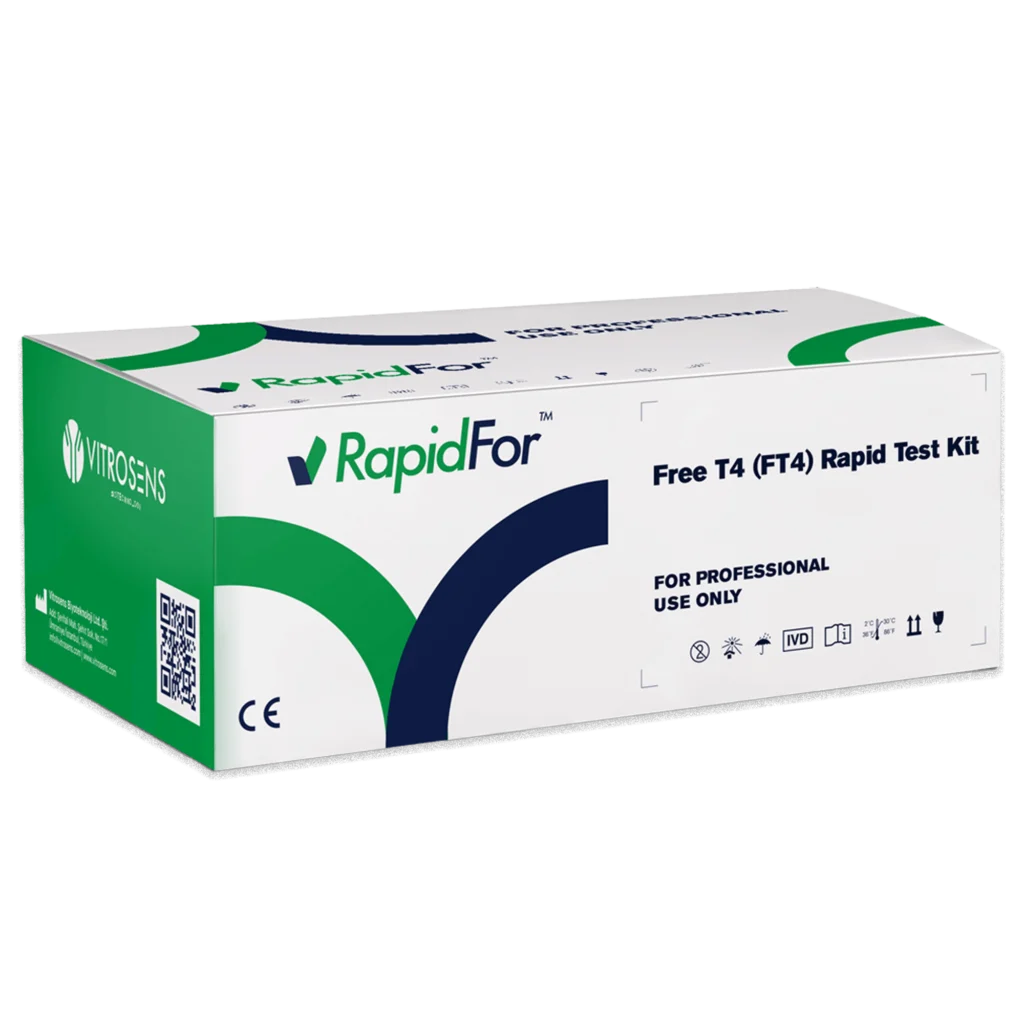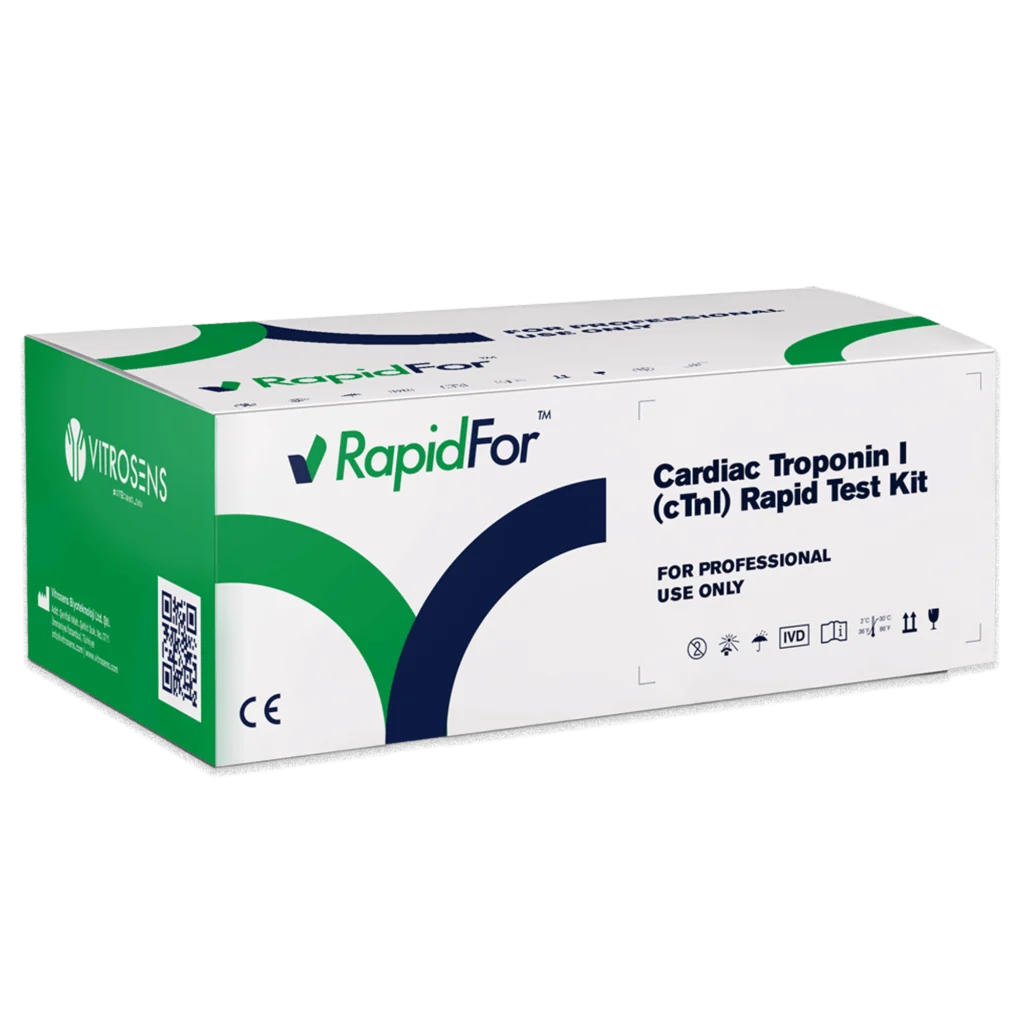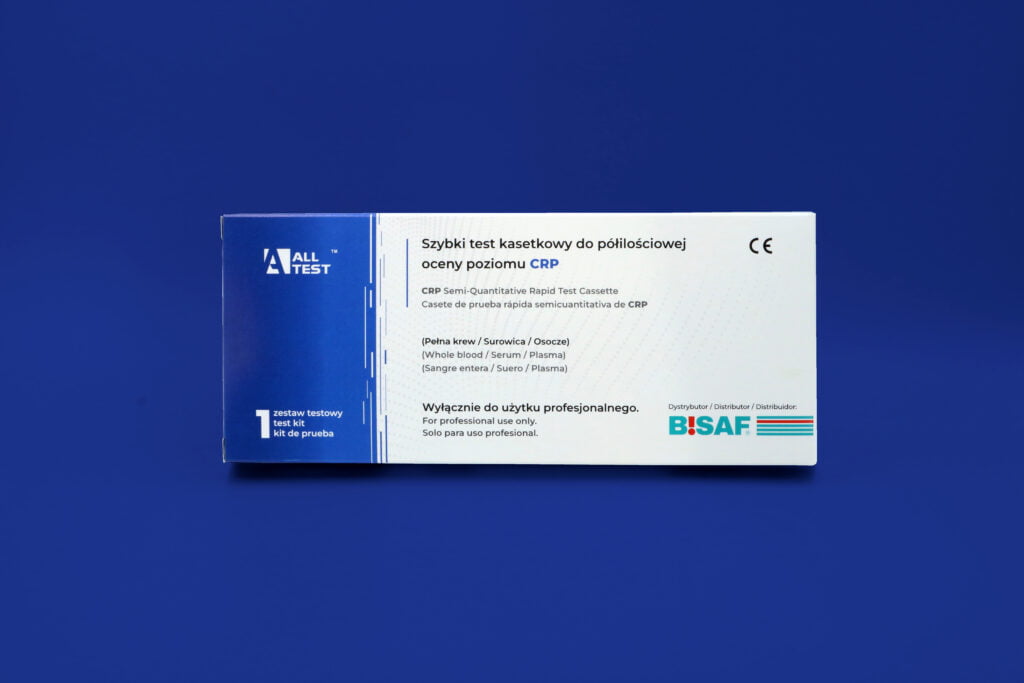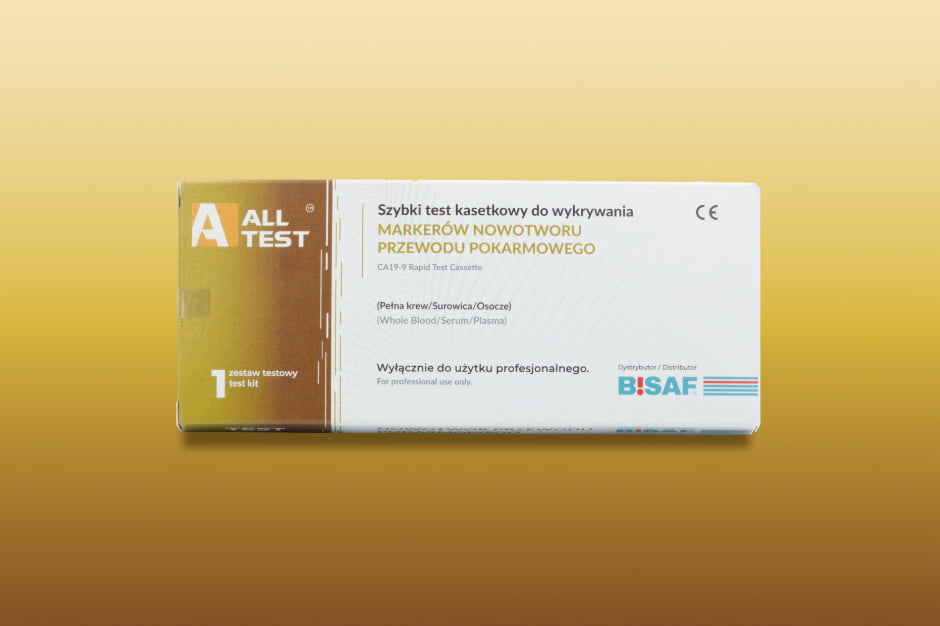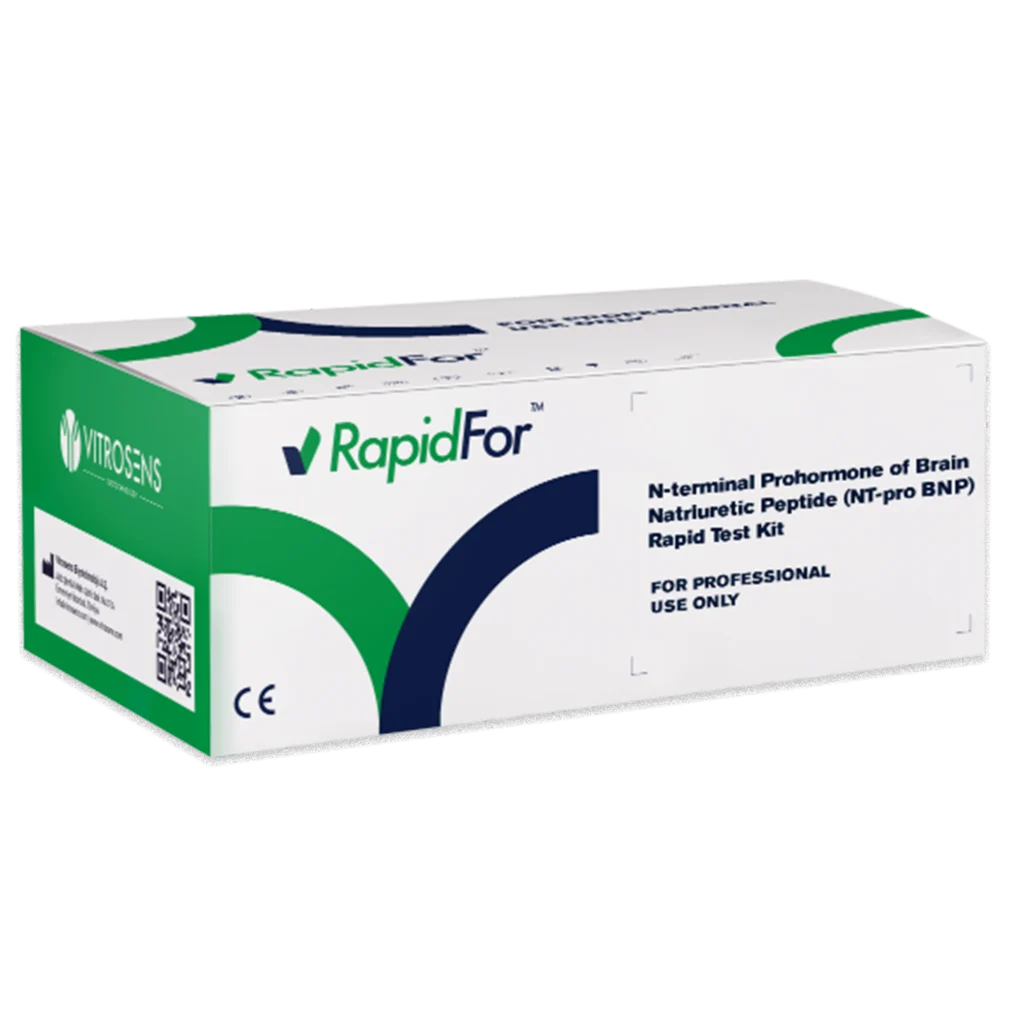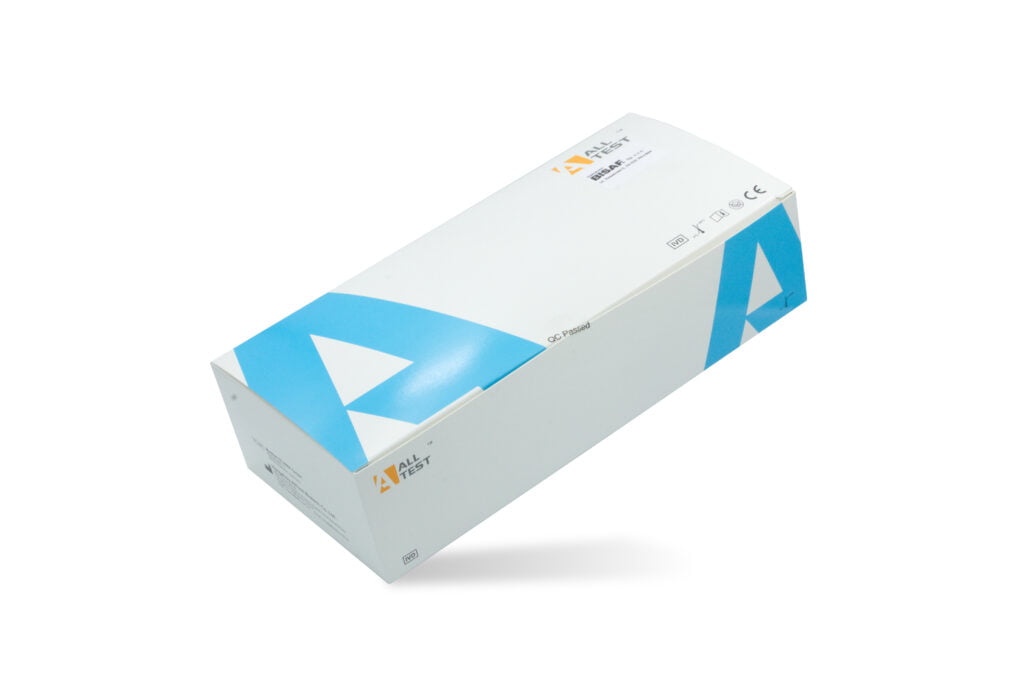Shop
4-in-1 Intestinal Combo Test for Norovirus/Rotavirus/Adenovirus/Astrovirus
34,99 PLN per piece
Work efficiently, order profitably!
Place wholesale orders at info@bisaf.pl
Product designed for professional use.
Skontaktuj się z nami / Contact us
Product description
4-in-1 Intestinal Combo Test for Norovirus/Rotavirus/Adenovirus/Astrovirus
The 4-in-1 Intestinal Combo Test is a rapid chromatographic immunological test for the qualitative detection of Norovirus, Rotavirus, Adenovirus, and Astrovirus in human fecal samples, designed to assist in diagnosing infections caused by these viruses.
Noroviruses, Rotaviruses, Adenoviruses, and Astroviruses are groups of viruses that cause gastrointestinal diseases. Norovirus is responsible for acute gastroenteritis and often leads to severe epidemics. Rotavirus, Adenovirus, and Astrovirus are the most common causes of diarrhea, especially in young children. Accurate diagnosis of diseases caused by these viral infections is crucial for tailoring appropriate treatment. Our test streamlines the diagnostic process, as it simultaneously examines 4 parameters in a single test.
Furthermore, the high sensitivity and specificity of this test ensure reliable and accurate results, available in just 15 minutes!
Product intended for professional use.
Properties
- sample material: stool
- painless collection of the test sample
- high-quality product
- quick result in as little as 15 minutes!
- single packaging
- product designed for professional use
Test specification
- norovirus: specificity: 98%, sensitivity: 98%, accuracy: 98%
- rotavirus: specificity: 97%, sensitivity: 98%, accuracy: 97.3%
- adenovirus: specificity: 98%,sensitivity: 96%, accuracy: 97.3%
- astrovirus: specificity: 99%, sensitivity: 87.5%, accuracy: 95.7%
The package contains
- test cups (with dilution buffer)
- droppers
- instruction manual
Test Applications
Our 4-in-1 Intestinal Combo Test is an ideal solution and helpful tool for professionals across various fields:
- pediatrics: this test can be used in diagnosing and monitoring viral infections in children, particularly for Rotavirus, a major cause of diarrhea in young patients
- gastroenterology: specialists in the gastrointestinal tract can use the test to diagnose viral infections in patients presenting symptoms such as diarrhea, vomiting, and abdominal pain
- infectious diseases: physicians specializing in infectious diseases can utilize the test to diagnose and monitor viral infections of the gastrointestinal tract in patients of all ages
- emergency medicine: in cases of emergencies where patients exhibit symptoms of diarrhea and vomiting, these tests can aid in rapid diagnosis and appropriate medical actions
- nursing: nurses and medical personnel in healthcare facilities can use these tests for screening patients with symptoms of gastrointestinal infections
Test Procedure
Note: Before conducting the test, ensure that the sample has reached room temperature (15-30°C).
- Thoroughly wash your hands using soap and water.
- Collect fecal samples: Collect an appropriate amount of feces (1-2 mL or 1-2 g) into a clean, dry sample container. For best results, conduct the test within 6 hours of sample collection. Samples can be stored for up to 3 days at 2-8°C if not tested within 6 hours. For long-term storage, keep samples below -20°C.
- Remove the test cup from the foil pouch and use it as soon as possible. Best results are obtained when the test is performed immediately after opening the foil pouch.
- Prepare fecal samples: For solid samples: Unscrew the test cup cap and remove the sample collection applicator. Randomly puncture the fecal sample in at least 3 different places using the applicator. Do not collect the sample with a spoon. For liquid samples: Holding the pipette vertically, fill it with the fecal sample, then transfer 2 drops of liquid sample (approximately 50 μL) to the test cup containing the dilution buffer.
- Reinsert the sample collection applicator into the test cup and screw on the cap.
- Shake the test cup for about 10-15 seconds to mix thoroughly. Allow the cup to react for 2 minutes.
- Remove the limit tape from the test cup.
- Place the test cup on a clean, flat surface, press down on the top of the cup, and start timing. CAUTION: Keep the test cup in an upright position while unfolding the test. Do not slide or invert the cup upside down.
- Read the results after 15 minutes. Do not read the results after 20 minutes.
Bestsellery
450,00 PLN per package (25 pieces)
Previous
Next
Last watched
899,00 PLN per package (25 pieces)
149,99 PLN per package (20 pieces)
Previous
Next



